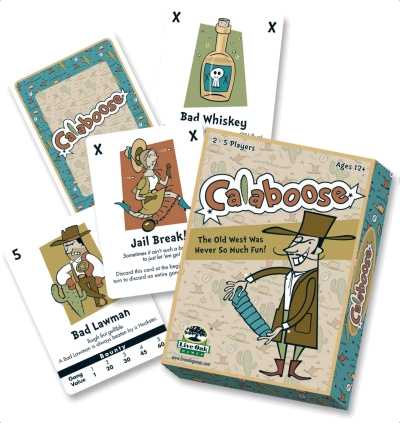
Here's a weird bit of trivia: Calaboose actually started out as a zoo game.
Seems ridiculous, doesn't it? I'd worked out the mechanic and thought that it would work with animals - a whole circle of life thing. It didn't. Kids were horrified by the animals eating each other, and adults weren't interested in playing a game based on animals.
It can be tempting to throw in the towel after hitting a roadblock like that. However, I couldn't abandon the play mechanic. When we were testing it (before adding the zoo theme), it tested very well. Even though the cards didn't have names, and it was only a subset of the cards in the final game, people had a ton of fun. The system has a couple of great advantages:

So, what do you do if you have a game that you love with a theme that everyone else hates? Start trying out themes, of course. We went through Pirates, Robots, Ninjas, and SuperHeroes before landing on cowboys.
In this case, the Wild West rocked. It improved the game dramatically, not just because of the color and humor, but because of the additional ideas it inspired.
After an extensive artist search (Billy Matter, the guy that did the illustrations for SiegeStones and Ice Lake, wasn't available), I found David Hile of Hile Illustration.
His style of art really seemed to mesh with what we were trying to do. We wanted a stylish game that adults could enjoy without being embarrassed, but also something that was fun and lighthearted. David and his associate Beth Balogh were key parts of the final process. They added a lot to the game.
Most of the quotes come from me, and some from comments during playtesting. Beth helped me refine them to fit within our graphic design. The thing I love about the quotes is that they make more and more sense the more you play the game. Sure, they're fun lighthearted bits to chuckle over. As you play, however, you'll realize that most of the quotes make a comment about how the card is used in the game. They work on two levels, and I really love that.
A game like this (or any other) doesn't come about without extensive playtesting and contributions from other people. Thanks to: June Matthews, Tad Simmons, Peter Popovich, Jimmy Willis, Billy Matter, Steve & Tricia Niedergeses, Theresa & Jorge, and Peggy & Ber Matthews.